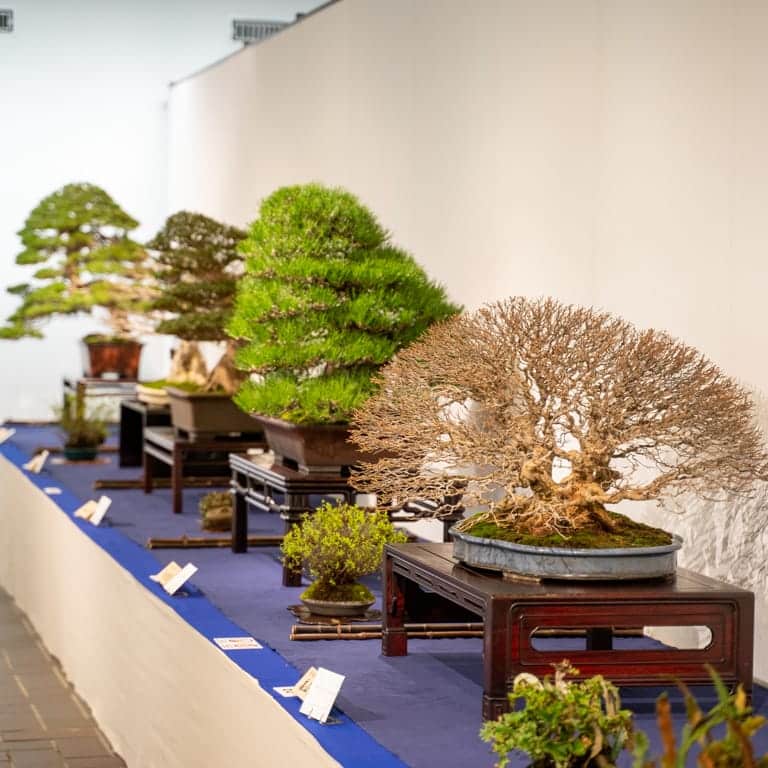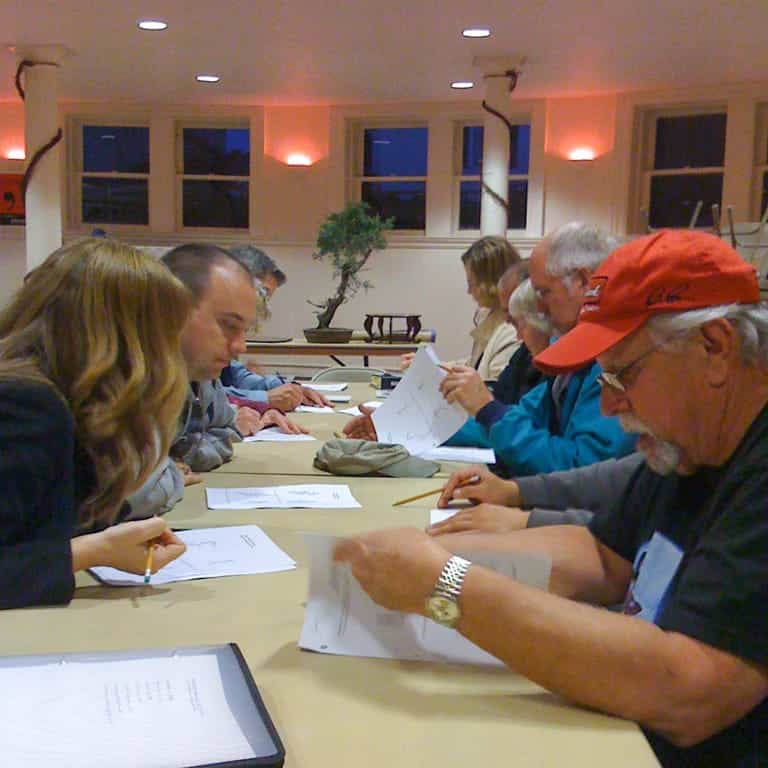When I think back to my earliest memories of studying bonsai with Boon Manakitivipart, I remember there were Kokufu books everywhere. We’d look at them in the workshop, at lunch, and after dinner. They were a constant reminder of what was possible if we kept at it long enough.
After studying with Boon for several years, I made my first trip to Japan to see the Kokufu exhibit in person. It was just as great as I imagined it would be!

Trees on display at the 2020 Kokufu exhibit
Over the years I’ve referred to the photos in exhibit books from Kokufu and other events around the world including the U.S. National Bonsai Exhibition and the Noelanders Trophy. Here are some of the ways in which I’ve used the books.
For casual study, I simply flip through the books and see what stands out to me. Sometimes specific species or styles catch my attention, other times it might be the display arrangements.
When I’m working with a species that I don’t work with frequently, I’ll flip through a few books to get an idea of what the options are and make note of which approaches I like or dislike.
I last did this when styling a cryptomeria. I was curious if it was more common for the branches to emerge horizontally from the trunk, or whether they’re more likely to grow up or down (I found all of the above). From there I looked at which branch patterns were my favorite and which might be a good fit for the tree I was working on (mostly downward with a few upward branches near the crown).
To prepare for bonsai intensives, I’ll trace the trunks of trees I admire and make copies so students can practice drawing in the primary branches and silhouette as a basic styling exercise, an exercise we did every year in Boon’s club, Bay Island Bonsai. (If you haven’t tried this, give it a shot – it can be a lot of fun!) I’ve done similar exercises related to container selection.

Filling in the silhouettes at a 2009 Bay Island Bonsai meeting
Exhibit books can be just as helpful for learning display conventions. If you’ve shown small or medium-sized trees in exhibits you might have put together three-point displays featuring two bonsai and one accent.

Three-point display
When displaying shohin bonsai there are countless combinations that can make for compelling displays.

Shohin display at the Kokufu exhibit
When looking from exhibit books from 10, 20, 30, or more years ago, it’s easy to spot trends in terms of styles and species as well as specific approaches to branch development and accent creation.
I’ve found that old Kokufu books in particular can offer interesting lessons. To a large degree, books from the 1970s and 1980s remind me of patterns I see in many North American bonsai today. Although there are many great trunks from these exhibits, not all of the trees have full silhouettes which reveals limited time in training. When looking at books from more recent events, I find that more trees show time in training, particularly the award-winning bonsai.
Seeing this makes me enthusiastic that we’re heading down a similar path where more trees show more character as time goes by.
If you’re interested in perusing photos from Kokufu exhibits from the past forty-five years, we’ve added a “Mystery Box” that includes books from four different eras spanning from 1977-2015.
We’ll select one book each from Kokufu exhibit numbers 51-59, 61-69, 71-79, and 81-89 at a 25% discount.
(Do note that although the older covers can be beat up, the books inside are in good shape and the images are clear.)
To see which albums are available or to learn more about the Mystery Box, see “Kokufu Books” on the Bonsai Tonight Online Store.
Subscribe to Bonsai Tonight
New Posts Delivered Every Tuesday and Friday
Alex V says
Great article, Jonas! One note, rarely are the stands in the photos the stands used in the exhibit. The pictures are taken before the event and a limited number of stands are brought. Most of the time it is fine, but some photos you wonder why someone e put that tree on the stand. Answer, it wasn’t on that stand for the show.
Jonas Dupuich says
Ha, that’s definitely the case – thanks, Alex!